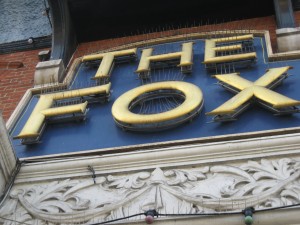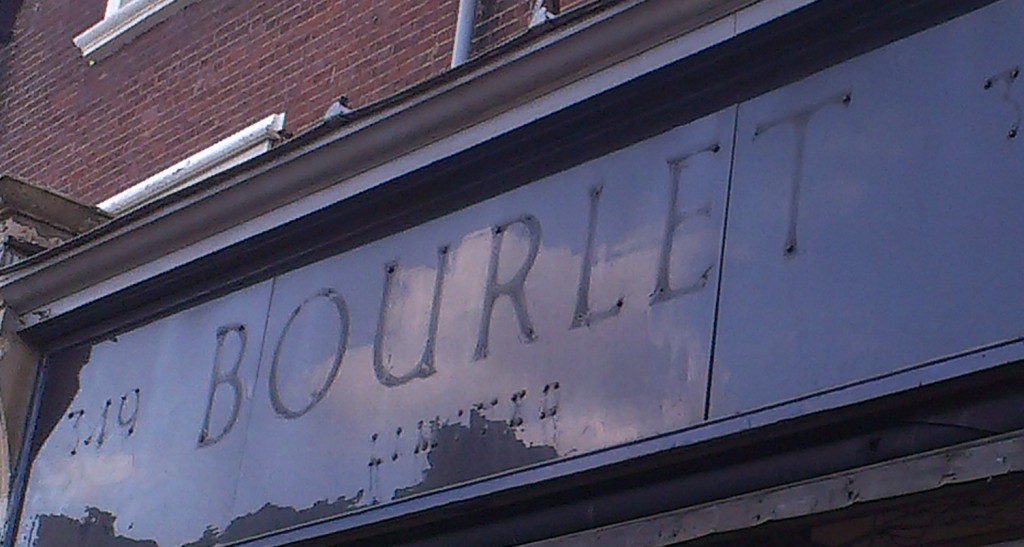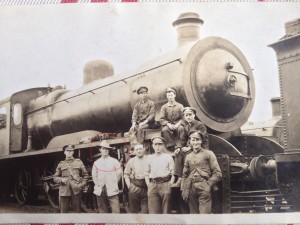We are lucky enough to have lots of green space in and around Palmers Green: Grovelands Park, Broomfield Park, the secluded open spaces tucked away behind houses. There is one park which gets less attention than the others but has perhaps the most amazing story of them all – one that is intrinsically linked with the story of Palmers Green.
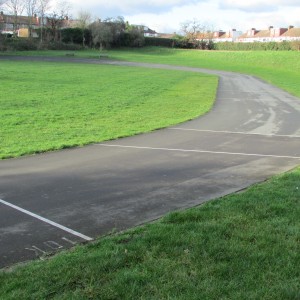 Tatem Park, at the bottom of Hedge Lane was formally opened by Mrs E A Young, Chairman of the Edmonton Urban District Council to great fanfare on 8 May 1937. The new park had been designed at some considerable cost by Thomas Mawson, a well-respected landscape architect and the first president of the Landscape Institute, and included undulating grounds, a state of the art playground, a boating pond and a world class skating track, around which steep grassed banks formed a green amphitheatre.
Tatem Park, at the bottom of Hedge Lane was formally opened by Mrs E A Young, Chairman of the Edmonton Urban District Council to great fanfare on 8 May 1937. The new park had been designed at some considerable cost by Thomas Mawson, a well-respected landscape architect and the first president of the Landscape Institute, and included undulating grounds, a state of the art playground, a boating pond and a world class skating track, around which steep grassed banks formed a green amphitheatre.
The new park was an exciting prospect for the children of Edmonton and Palmers Green. Reported the local paper: “A host of children…made straight for the playgrounds, the cycling track and the paddling and model yachting pools without waiting for the completion of the [opening] ceremony, and the speeches which followed were punctuated by their excited shouts and happy laughter.”
The park was the fruit of a partnership between Southgate Borough Council and Edmonton Urban District Council, a fact so astounding to the local populace that it was described as a ‘romance of local history.’ Instead of competing for the park, as they looked set to do, the two local authorities had been persuaded by Alderman Ingram to jointly contact the Harman sisters who owned the land with proposals for a new park.
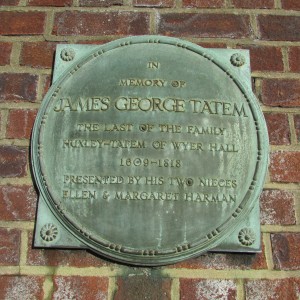 The approach was successful, and the elderly Harmans agreed to donate the land provided that under no circumstances should it ever be used for any purpose other than as an open space or recreation ground. And as the only surviving relatives of James Tatem, the last owner of Weir or Wyer Hall, of which the lands were once part, they asked that the park be named Tatem Park as a permanent reminder of their family.
The approach was successful, and the elderly Harmans agreed to donate the land provided that under no circumstances should it ever be used for any purpose other than as an open space or recreation ground. And as the only surviving relatives of James Tatem, the last owner of Weir or Wyer Hall, of which the lands were once part, they asked that the park be named Tatem Park as a permanent reminder of their family.
Once a prominent local landmark, Weir Hall had stood close to the junction of today’s A10 and North Circular roads and is known to have existed as early as 1340, when it was the property of the Wyerhalle family who had large estates in the area under Edward III. In 1610, it became the home of George Huxley, a merchant haberdasher of the City of London, who appears to have got it for a knock down price. Not much is known about the hall itself, though it appears to have been a moated, stately pile, particularly following Huxley’s extensive rebuilding, refurbishments and repair. It is also thought that the house may have come under attack in the civil war – the walls are said to have borne the marks of musket fire.
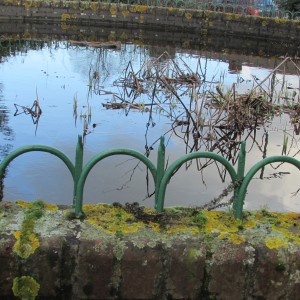 The male line of Huxley’s ran out in the 1750s, and the property passed to Thomas Huxley’s daughter Sarah, and then on to relatives the Tatems in the 1800s. The hall is said to have been in a state of some dilapidation by then, and neither James Tatem nor his son appears to have lived there. The house was demolished in 1818 but still continued on in local legend. There is a story of a cook who murdered another servant, a bricked up haunted room, and sightings of a spectral white dog.
The male line of Huxley’s ran out in the 1750s, and the property passed to Thomas Huxley’s daughter Sarah, and then on to relatives the Tatems in the 1800s. The hall is said to have been in a state of some dilapidation by then, and neither James Tatem nor his son appears to have lived there. The house was demolished in 1818 but still continued on in local legend. There is a story of a cook who murdered another servant, a bricked up haunted room, and sightings of a spectral white dog.
The landscaping of the new park may have been due to the talents of Mawson, but the sunken shape of the park and undulating banks were the product of other processes. At the end of the nineteenth century the land which was to become Tatem Park had housed brick kilns which made the very brick which was used to build Palmers Green. The local council had also previously leased the land to dig gravel for local roads.
But excavations brought far more to the surface than just building material – as the digging went deeper, through topsoil, clay and then gravel, new layers of geological strata were revealed, containing mysterious finds deposited from the ice age. The news of the discovery of mammoth bones hit the national press in 1913 – the full tally from excavations included the skeleton of a mastodon, remains of Indian and African elephants, a picture of a reindeer engraved on a mammoth tusks, flints and bone tools, the skeleton of a Longirostris (a kind of dolphin), and a skeleton of a Magatherium, a bear like large land mammal.
These are just the finds we know about, however. “Workers in the gravel pits would take their finds home with them and use them as garden ornaments!” says Heather Frost of Friends of Tatem Park. Its likely that the finds dispersed far and wide without ever being recorded, and indeed, there are probably a few homes in Edmonton and Palmers Green who unbeknownst to them, still have a relic of prehistoric times just a few feet away from their front door. Heather has long hoped that they will one day all be tracked down and exhibited to the public.
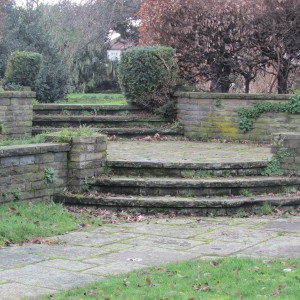 In 1945 Edmonton Council bought adjoining waste land on the corner of Hedge Lane and the Great Cambridge Road to create the more formal Hollywood Gardens and the two parks became united in 1983 to create one continuous urban oasis from the traffic of the Great Cambridge Road. The roller skating track has recently been refurbished and has a modern, record breaking surface which plays host to many international and British championship races. In the park, the emphasis is on wildlife conservation and meeting the needs of children and families in the area.
In 1945 Edmonton Council bought adjoining waste land on the corner of Hedge Lane and the Great Cambridge Road to create the more formal Hollywood Gardens and the two parks became united in 1983 to create one continuous urban oasis from the traffic of the Great Cambridge Road. The roller skating track has recently been refurbished and has a modern, record breaking surface which plays host to many international and British championship races. In the park, the emphasis is on wildlife conservation and meeting the needs of children and families in the area.
The hard working Friends of Tatem Park are currently in discussion with Enfield Council about the possibility of a new dinosaur themed playground to commemorate the history of the area. Like all friends groups, they aren’t short of enthusiasm but need more members who would be interested in helping them take the park into the next phase of its long life, and in particular help with fund raising and conservation. If you would be interested in getting involved why not get in touch? Email me at palmersgreenn13@btinternet.com and I will pass on your details.
